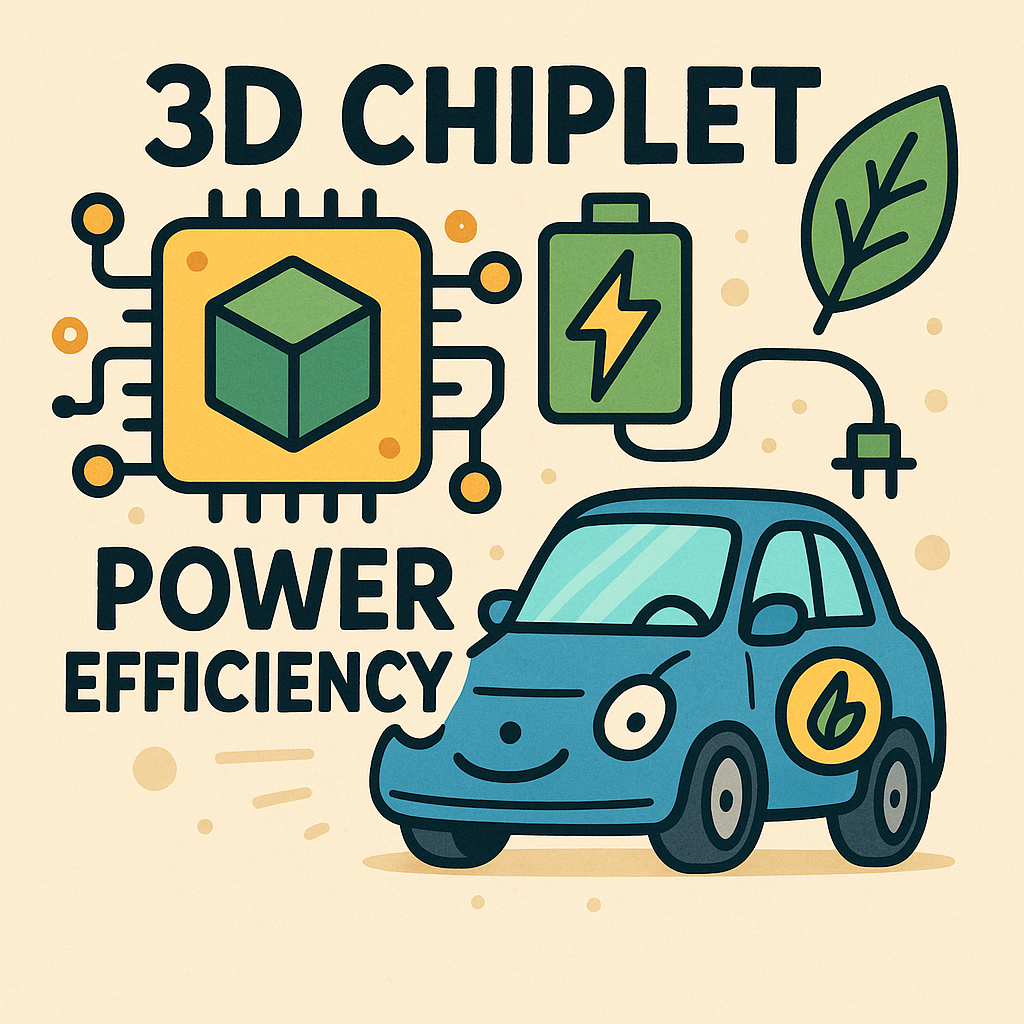Understanding 3D Chiplet Integration in Automotive SoCs
The advent of 3D chiplet integration has ushered in a new era for automotive embedded systems, particularly in electric vehicles (EVs). As the demand for advanced control systems in EVs increases, the traditional monolithic chip designs are proving inadequate. The integration of chiplets allows for modular designs that can enhance power efficiency while maintaining performance. But what does this mean for the hardware architecture and the firmware that drives these systems?
The Shift to Chiplet-Based Architectures
Chiplet technology involves packaging multiple smaller chips into a single package, enabling greater flexibility and scalability in design. This modular approach allows engineers to mix and match different chiplets tailored for specific functions—such as signal processing, power management, or communication—without redesigning the entire SoC. This is particularly beneficial in the automotive space where diverse functionalities must coexist harmoniously.
For example, in EV control systems, we need to manage not just propulsion but also battery management systems (BMS), regenerative braking, and advanced driver-assistance systems (ADAS). Each function has distinct processing requirements. Utilizing chiplets means we can optimize power consumption for each task, an essential factor in extending the range of electric vehicles.
Challenges of 3D Integration
While the benefits of 3D chiplet integration are compelling, they do not come without challenges. One significant engineering hurdle is thermal management. As chiplets are stacked vertically, heat dissipation becomes more complex. In traditional layouts, heat could be dissipated laterally; however, in a 3D configuration, heat from the upper layers can adversely affect the lower ones.
- Thermal Interface Materials (TIM): Engineers must carefully select TIMs that effectively transfer heat while maintaining electrical insulation.
- Power Distribution Network (PDN): A robust PDN is critical in 3D designs to ensure that power delivery does not create hot spots.
Moreover, the design of the interconnects between chiplets is paramount. The bandwidth and latency of these connections can significantly affect the overall performance and efficiency of the system. Engineers often face trade-offs between the speed of interconnects and power consumption. For instance, high-speed interconnects may consume more power, which is counterproductive in an EV context where energy efficiency is crucial.
Firmware and Algorithm Optimization
With the hardware foundation laid, the firmware becomes the backbone of functionality and efficiency. It must be designed to take advantage of the chiplet architecture. Algorithms that were effective for monolithic designs may need rethinking. For example, in a BMS, real-time data processing is essential. Leveraging parallel processing capabilities of chiplets can lead to significant improvements in response times while lowering the overall power consumption.
Moreover, adaptive algorithms that can dynamically adjust processing loads based on real-time conditions can further enhance efficiency. These algorithms require sophisticated software development and testing to ensure reliability in the high-stakes automotive environment.
Real-World Design Tradeoffs
In real-world applications, decision-making often involves balancing performance, power efficiency, and cost. For instance, while integrating high-performance chiplets may seem ideal, the cost implications and the potential for increased complexity in manufacturing cannot be overlooked. A significant trade-off is the choice between using more advanced, power-hungry chiplets or more basic ones that may not deliver the same level of performance but are more efficient.
Another consideration is the scalability of the design. As automotive technology continues to evolve, the ability to upgrade or modify chiplets without overhauling the entire system is invaluable. This is where the true power of chiplet architectures shines, allowing for iterative improvements and future-proofing designs against rapid technological advancements.
Conclusion: The Future of Automotive Embedded Systems
The integration of 3D chiplets into automotive embedded SoCs represents a significant step forward in achieving higher power efficiency for electric vehicle control systems. While the challenges posed by thermal management, firmware optimization, and design trade-offs remain, the potential benefits in performance and energy savings are driving innovation in this field. As engineers continue to explore the capabilities of chiplet integration, we can expect to see even more sophisticated systems that push the boundaries of what is possible in electric vehicle technology.



